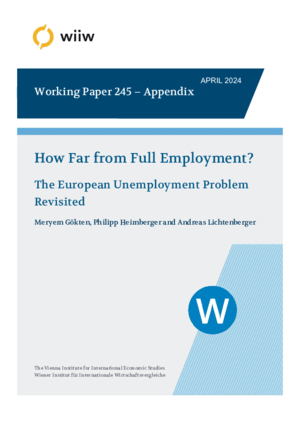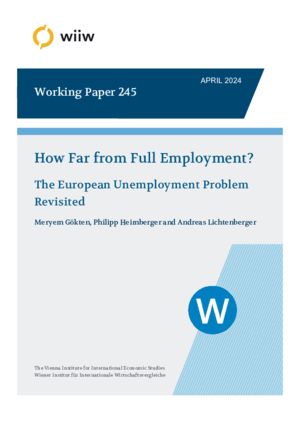How Far from Full Employment? The European Unemployment Problem Revisited
Meryem Gökten, Philipp Heimberger and Andreas Lichtenberger
wiiw Working Paper No. 245, April 2024
41 pages including 3 Tables and 8 Figures
This paper analyses deviations from full employment in EU countries, compared with the US and the UK. We apply the Beveridge (full-employment-consistent) rate of unemployment (BECRU), derived from the unemployment-vacancies relationship. The BECRU is the level of unemployment that minimises the non-productive use of labour. Based on a novel dataset for the period 1970-2022, we find full employment episodes in selected EU countries (Germany, Sweden, Austria, Finland) during the 1970s. The European unemployment problem emerged in the 1980s and 1990s, as Beveridgean full employment gaps increased. In the run-up to the global financial crisis, full employment gaps declined, then increased during the Great Recession. Slack in labour markets increased initially during the pandemic. Labour markets became tighter when recovering from the COVID-19 crisis, but few countries hit full employment. Panel regressions highlight that hysteresis, labour market institutions, structural factors, macroeconomic factors and political factors contribute to explaining full employment gaps.

Online Appendix: How Far from Full Employment? The European Unemployment Problem Revisited
This appendix offers supplementary material for the paper 'How Far from Full Employment? The European Unemployment Problem Revisited'. It presents results on measurements, pre-testing analysis, and a set of robustness tests.
free download
Keywords: Full employment, unemployment, vacancies, EU, UK, US
JEL classification: E24, E32, E6, J63, J64
Countries covered: European Union, OECD
Research Areas: Macroeconomic Analysis and Policy, Labour, Migration and Income Distribution
